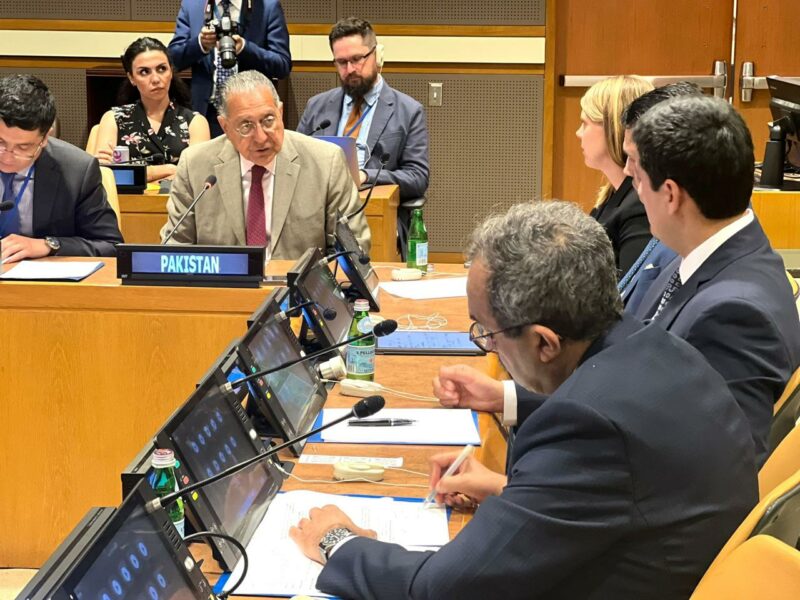NEW YORK: Pakistan has shown its willingness to share its knowledge and experience in Markhor conservation with other countries.
Speaking at the high-level side event on “Conserving the Markhor,” convened by the Permanent Mission of Tajikistan in collaboration with UNEP and IUCN, Pakistan’s Permanent Representative to the UN Ambassador Munir Akram highlighted his country’s successful conservation policies.
He emphasized the importance of strengthening community governance structures and promoting local ownership over sustainable natural resource use as crucial first steps in building renewed capacity for wildlife management.
He said Pakistan had formulated a trophy hunting policy that initially allowed a quota of six and later 12 Markhors to be hunted per season. This program, he said, is recognized under the Convention on International Trade in Endangered Species of Wild Fauna and Flora (CITES).
Ambassador Akram explained that local communities are trained to monitor and manage Markhor populations and trophy hunts independently. These communities retain 80pc of the trophy permit fees, creating strong incentives for conservation.
He said this policy has led to significant livelihood improvements and community development projects, with proceeds also spent on enhancing Markhor breeding spaces and habitats.
Ambassador Akram said the Markhor, an ecologically significant species, plays a vital role in its ecosystem and offers substantial opportunities to boost the economy, foster conservation efforts, and promote sustainable tourism and economic growth.
He said that for Pakistan the Markhor holds special significance as the national animal, inhabiting the mountainous regions of Chitral, Kohistan, and Kalam, as well as northern Gilgit-Baltistan, southwestern Balochistan, and parts of Azad Jammu and Kashmir.
“Globally, the Markhor population is declining, with fewer than 6,000 mature individuals remaining. However, in Pakistan, proactive conservation programs and community engagement have led to an increase in the Markhor population over the past ten years, now estimated between 3,500 and 5,000,” he stated.
He also highlighted the significance of GA resolution 78/278, which proclaimed 24th May as the International Day of the Markhor, in promoting collaborative efforts for the long-term preservation of this iconic species and its habitat.


Comments are closed.